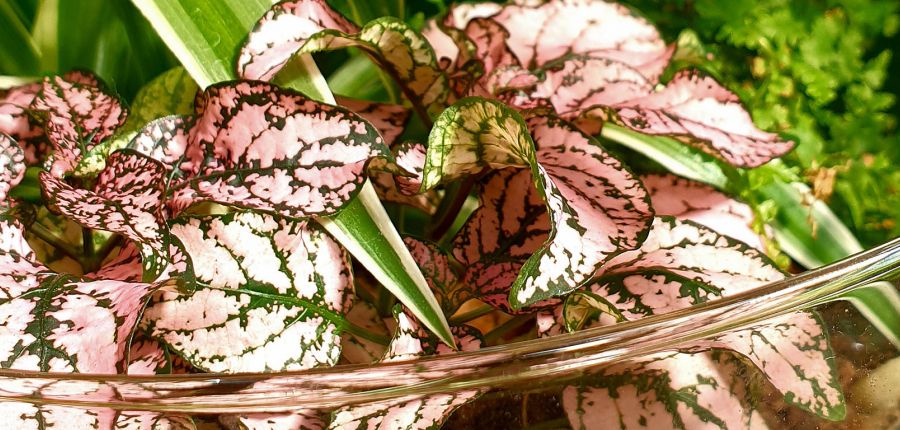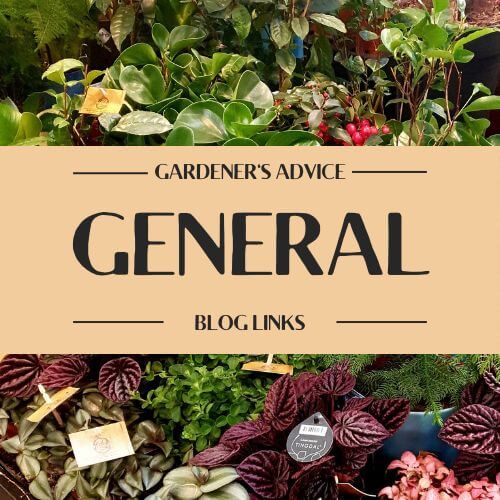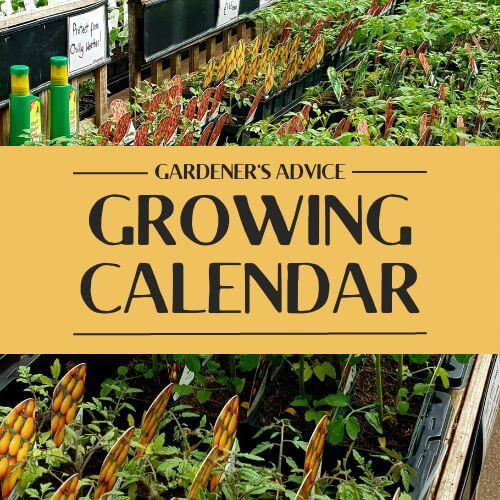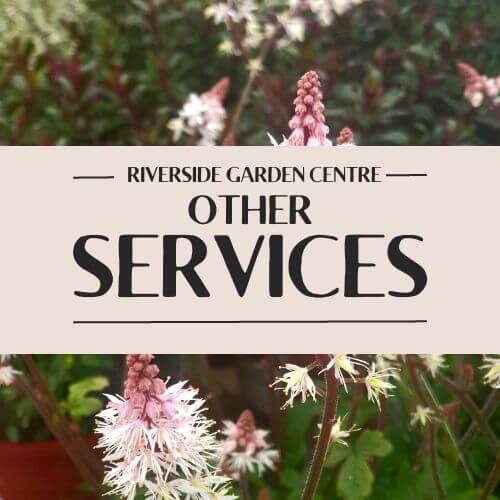Making a Terrarium
Posted By: Category: Houseplants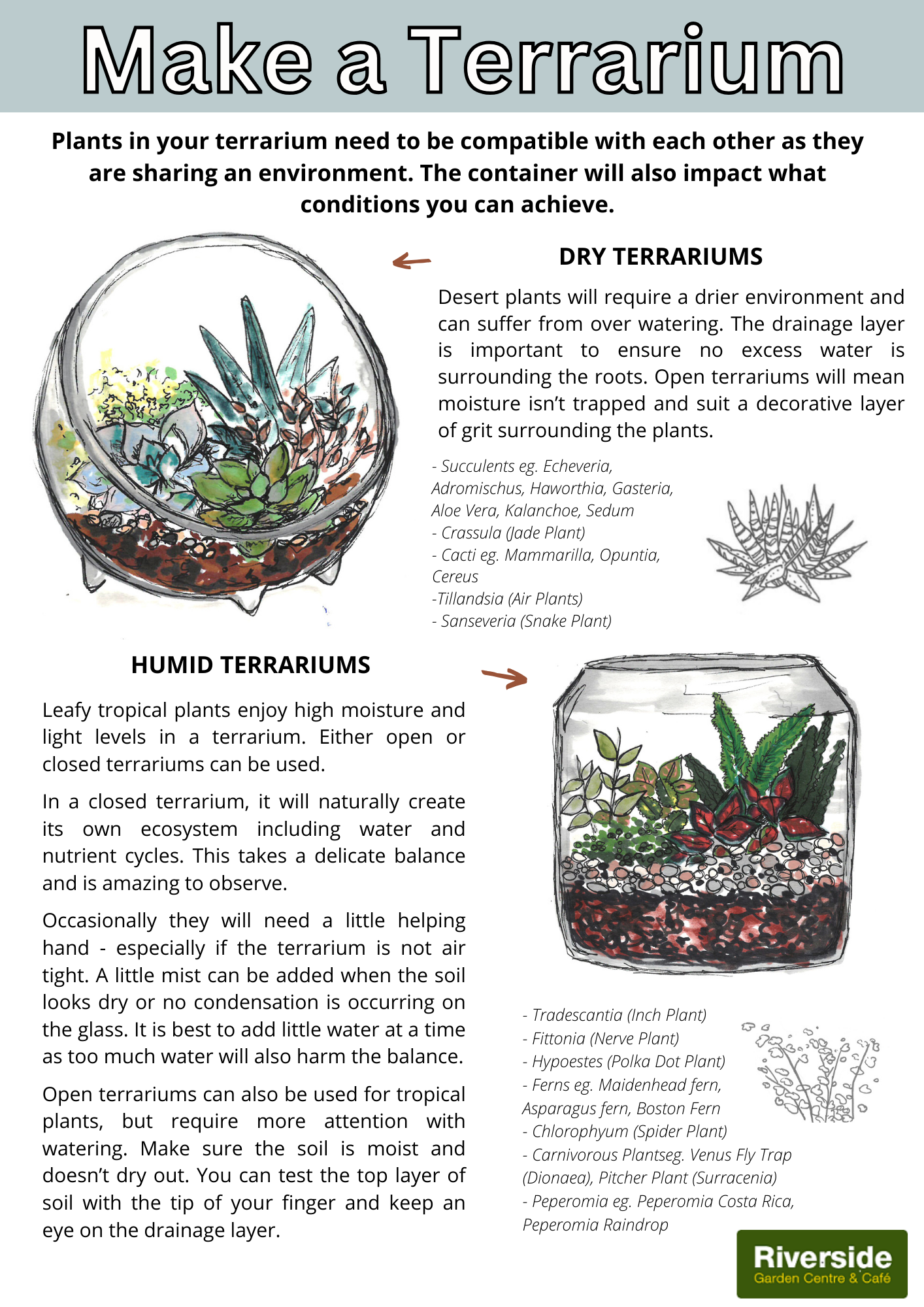
.png)
Download this guide as a pdf or pick on up from Riverside!
.png)
Please note: These images reflect our display July 2022
Plants in your terrarium need to be compatible with each other as they are sharing an environment. The container will also impact what conditions you can achieve.
Dry Terrariums
Desert plants will require a drier environment and can suffer from over watering. The drainage layer is important to ensure no excess water is surrounding the roots. Open terrariums will mean moisture isn’t trapped and suit a decorative layer of grit surrounding the plants.
- Succulents eg. Echeveria, Adromischus, Haworthia, Gasteria, Aloe Vera, Kalanchoe, Sedum
- Crassula (Jade Plant)
- Cacti eg. Mammarilla, Opuntia, Cereus
-Tillandsia (Air Plants)
- Sanseveria (Snake Plant)
Humid Terrariums
Leafy tropical plants enjoy high moisture and light levels in a terrarium. Either open or closed terrariums can be used.
In a closed terrarium, it will naturally create its own ecosystem including water and nutrient cycles. This takes a delicate balance and is amazing to observe.
Occasionally they will need a little helping hand - especially if the terrarium is not air tight. A little mist can be added when the soil looks dry or no condensation is occurring on the glass. It is best to add little water at a time as too much water will also harm the balance.
Open terrariums can also be used for tropical plants, but require more attention with watering. Make sure the soil is moist and doesn’t dry out. You can test the top layer of soil with the tip of your finger and keep an eye on the drainage layer.
- Tradescantia (Inch Plant)
- Fittonia (Nerve Plant)
- Hypoestes (Polka Dot Plant)
- Ferns eg. Maidenhead fern, Asparagus fern, Boston Fern
- Chlorophyum (Spider Plant)
- Carnivorous Plants eg. Venus Fly Trap (Dionaea), Pitcher Plant (Surracenia)
- Peperomia eg. Peperomia Costa Rica, Peperomia Raindrop
Layers of your Terrarium (from base up)
Perlite
The base is a drainage layer, providing a space for excess water. Perlite comes as lightweight beads that absorb water, ensuring roots don’t sit in damp soil. Alternatives would be large stones, Aqua Stones (clay pebbles), grit, or sharp sand.
Only a shallow layer (a few centimeters) is needed as you don’t want your terrarium to dry out too much. Keep in mind the depth of your container to make sure you have space for the next layers. A rounded base can be leveled using this drainage layer.
Soil Mix
A mixture of ingredients will ensure your plants have a healthy medium to root into, with a supporting structure and nutrients.
For our terrariums, we use a mixture of perlite, sand or grit and potting soil. Use a terrarium pre-mix as your base and add the ingredients to suit your plant selection. For example, tropical plants benefit from aeration from perlite, increasing oxygen in the rooting area. Whereas cacti and succulents will prefer more sand/grit creating air pockets, allowing water to move freely.
Some terrariums use thin layers of sand to add aesthetic interest, alternating sand and soil mix in a striped effect.
Plants
The fun bit! The plants you pick will need to suit a similar environment and type of terrarium you are making.
An open terrarium will suit desert plants - cacti and succulents primarily. A closed terrarium will contain more moisture and so tropical plants will thrive in this environment. See overleaf for some ideas.
Get creative and vary colour, texture and height of your plants. However, also remember they will grow! Try not crowd your terrarium and make sure they are all visible.
Remove the plant from it pot and use tweezers or stick to clear the roots of any soil. Place the plant in your terrarium , making sure its best side is on show! Use the tweezers/stick to bury the roots in the soil mix so it is held in place.
Removing dead leaves and trimming plants periodically will ensure a healthy terrarium long term. If you think your plant is struggling to sustain its size, they can handle a decent pruning and often look healthier because of it.
Sand, Stones, Bark
Decoration can bring together a terrarium and also helps to protect and anchor the roots in the soil mix.
A thin layer of sand with some decorative stones is popular, especially for dry terrariums. Or, you can achieve a earthy woodland style with bark chips and moss (closed terrariums only).
There are many options for decoration and it is personal choice to keep to a natural style or have fun with figurines and signs in your terrarium.
Please don't hesistate to ask our friendly staff any questions in person, by phone call or by emailing in through our contact form.
Please asPlk if you have any questionsPlea

